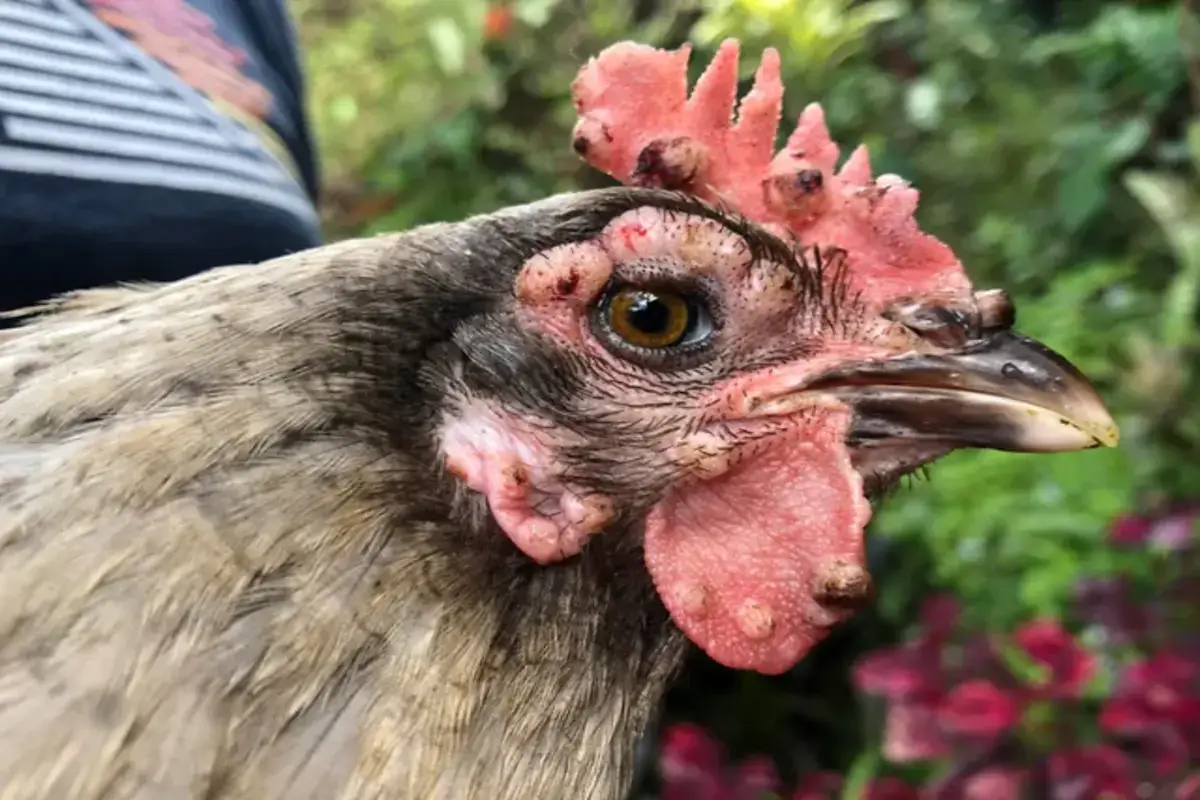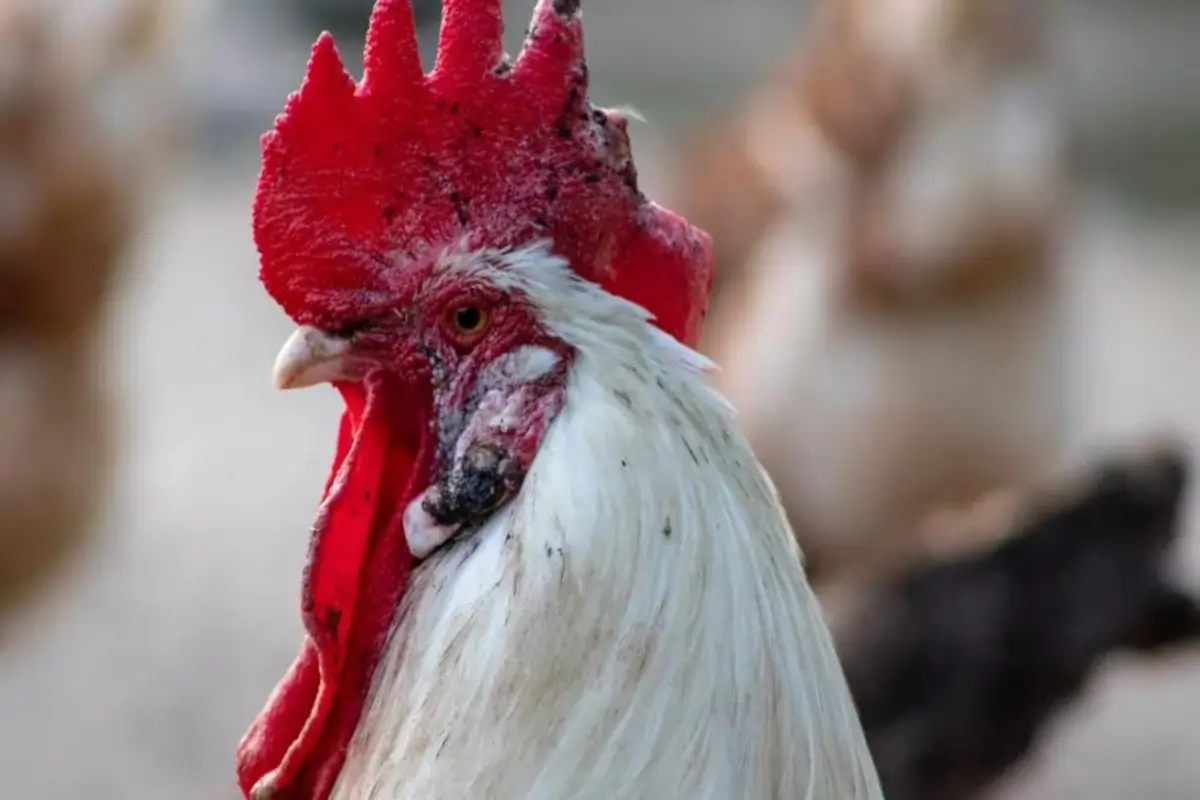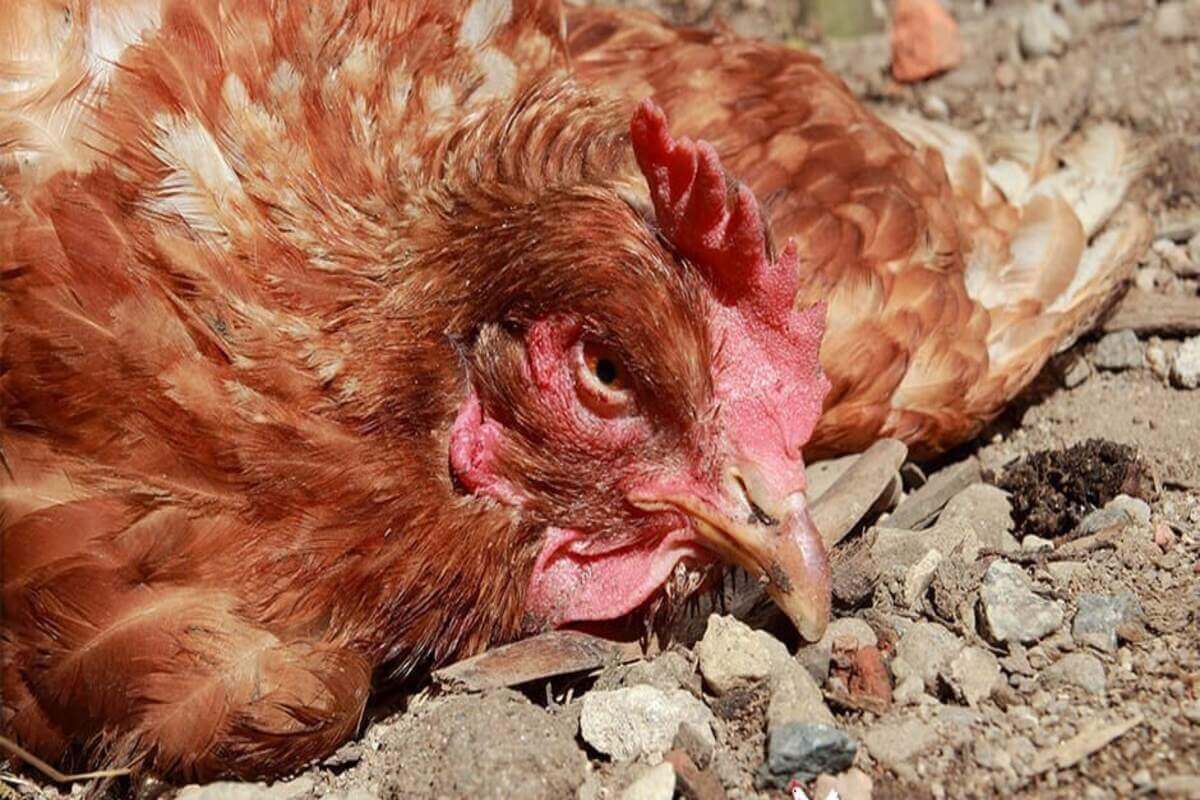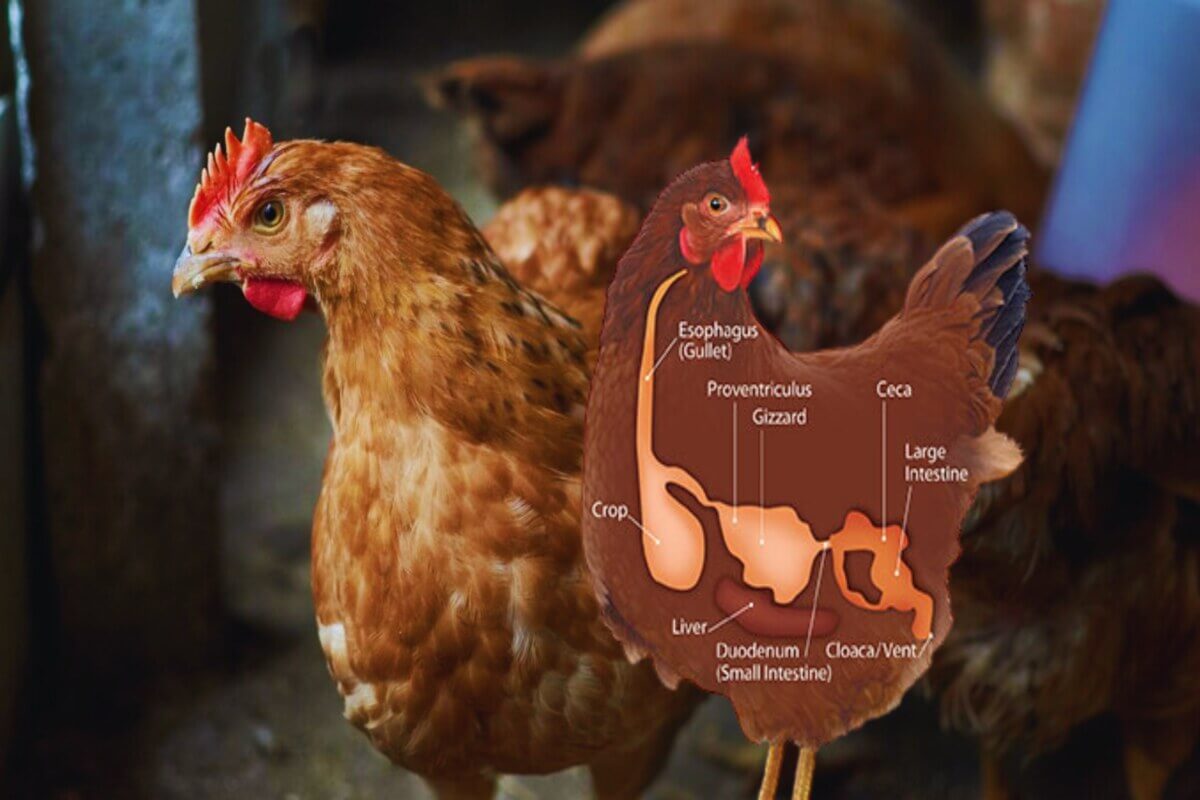Table of Contents
Backyard chickens are a wonderful addition to many homes, bringing fresh eggs, natural pest control and a connection to nature. But like any other livestock, chickens are prone to many diseases that can affect their health and productivity. One of those is fowl pox, a viral disease that can be a real problem for your flock. If left untreated the disease can cause reduced egg production, weight loss and even death. Knowing how to prevent, manage and treat fowl pox is important for any chicken owner to keep their flock healthy and productive.
In this post we’ll cover the causes, symptoms, prevention and treatment of poultry pox in backyard chickens with practical steps to protect your flock from this common disease.
What is Fowl Pox?
Fowl pox is a viral disease caused by the Avian Pox Virus that affects chickens and other poultry species like ducks, turkeys and pigeons. The virus is spread by insect vectors like mosquitoes but can also be transmitted through direct contact with infected birds or contaminated objects. the disease comes in two main forms:
Dry Pox (Cutaneous Form): This form shows up as raised, scabby lesions on the comb, wattles, face and other parts of the skin. Dry pox is the most common and mildest form of the disease. It may cause discomfort and reduced egg production but usually doesn’t cause severe complications or death.
Wet Pox (Diphtheritic Form): This more serious form of poultry pox affects the mucous membranes inside the mouth, throat and respiratory tract. It can cause difficulty in breathing, swallowing and drinking and in severe cases can lead to suffocation or secondary bacterial infections making it a more deadly form of the disease.
Knowing both forms of fowl pox and how they show up in your flock is the first step to managing and controlling this viral disease.
 Causes and Transmission of Fowl Pox
Causes and Transmission of Fowl Pox
Fowl pox is spread through several ways making it highly contagious in poultry populations. The main modes of transmission are:
Insect Vectors (Mosquitoes): Mosquitoes are one of the most common and efficient vectors of fowl pox. When a mosquito bites an infected bird the virus enters the insect’s system. The mosquito then spreads the virus to healthy birds when it feeds again. This mode of transmission is more worrying in warm and humid climates where mosquitoes are abundant.
Direct Bird-to-Bird Contact: the disease can also spread through direct contact between infected and healthy chickens. This includes physical contact such as pecking, mating or sharing feeding and watering areas. The virus can enter a healthy bird’s body through open wounds or mucous membranes.
Contaminated Equipment and Surfaces: Shared equipment like waterers, feeders and perches can become contaminated with the virus if they come into contact with an infected bird. If proper sanitation procedures aren’t followed these surfaces can harbor the virus for a long time and increase the chances of transmission.
Infected Debris and Scabs: Chickens with poultry pox shed the virus in their scabs, droppings and respiratory secretions. If healthy birds come into contact with contaminated bedding, feed or even soil they can become infected with the virus.
Symptoms of Fowl Pox
Knowing the symptoms early is key to taking action and preventing further spread in your flock. The symptoms can vary depending on the type of fowl pox (dry or wet) and the severity of the infection. Here are the common signs to look out for:
Dry Pox (Skin Lesions)
Raised Lesions: The main symptom of dry pox is the appearance of small, raised lesions or scabs on the skin especially on the comb, wattles, face and legs.
Swelling: Infected areas may become swollen, red or inflamed especially around the eyes and face.
Lethargy and Loss of Appetite: Chickens may become lethargic and lose appetite due to the discomfort of the lesions.
Reduced Egg Production: Infected hens may stop laying eggs due to illness or stress.
Secondary Infections: If the scabs or lesions are scratched or irritated secondary bacterial infections may occur and complicate the condition.
Wet Pox (Mucous Membrane Lesions)
Mucous Discharge: Wet pox affects the mucous membranes of the mouth, throat and respiratory tract and causes excessive mucus production. This can result to runny nose or eyes and in some cases the bird may have difficulty breathing.
Difficulty Eating and Drinking: Lesions in the mouth and throat can cause painful swallowing and reduce food and water intake.
Swollen Eyes and Face: Infected birds may have swelling or pus around the eyes and can’t see properly.
Respiratory Distress: In severe cases affected birds may have labored breathing, wheezing or open mouthed breathing.
Death: If the infection becomes severe especially in young birds or those with weakened immune systems it can cause suffocation or death due to respiratory failure or secondary bacterial infections.
Prevention of Fowl Pox
The best way to manage fowl pox in your flock is to prevent it from occurring in the first place. Here are the ways to do it:
1. Vaccinate Your Flock
Vaccination is one of the best ways to prevent poultry pox in chickens. The vaccine works by introducing a small, weakened form of the virus into the bird’s system and stimulates an immune response without causing the full blown disease. There are two types of vaccines available:
Live Virus Vaccine: Given by a small scratch on the bird’s skin, this vaccine contains a live but weakened form of the virus.
Killed Virus Vaccine: Given by injection and contains an inactivated form of the virus.
Vaccination should be done when chickens are young, usually around 8-12 weeks of age but consult your veterinarian to determine the best vaccination schedule for your flock.
2. Control Mosquito Populations
Since mosquitoes are the main vector of fowl pox, controlling their population is part of prevention. Here’s how you can reduce mosquito exposure to your chickens:
Eliminate Standing Water: Mosquitoes breed in standing water so make sure there are no puddles, clogged gutters or uncovered water containers in or near the coop.
Mosquito Traps: Use mosquito traps or netting to reduce the number of mosquitoes around the chicken coop.
Repellent Plants: Plant mosquito repellent plants like citronella, lavender and marigolds around the coop to deter mosquitoes.
3. Sanitize the Coop and Equipment
Keeping a clean and hygienic environment is important in preventing the spread of fowl pox. Regular cleaning of the chicken coop, bedding, and equipment will reduce the risk of contamination. Consider using products like Breatheright Coop Herbs to keep the air fresh and reduce odors in your chicken coop.
Clean Feeders and Waterers: Wash and disinfect feeders, waterers and perches regularly to remove potential sources of the virus.
Disinfect Surfaces: Use a mild disinfectant to clean surfaces in the coop, floors, walls and nesting boxes. This will kill any viral particles left behind.
4. Biosecurity
Introducing new birds to your flock can expose your chickens to diseases like fowl pox. To minimize the risk of infection follow these biosecurity practices:
Quarantine New Birds: Isolate any new chickens for at least 2-3 weeks before introducing them to the rest of the flock. This will give you time to observe them for signs of illness.
Limit Visitors: Restrict access to your chicken coop, especially from people who have visited other poultry farms or facilities.
Protective Gear: If possible wear protective clothing and disinfect your shoes before entering the coop to prevent bringing in any potential contaminants.
5. Healthy Flock
A healthy flock is more resistant to infections like fowl pox. Make sure your chickens are getting a balanced diet, plenty of water, and clean, dry bedding. To support their health, consider adding supplements like Chickens & Ducks to their diet for better immunity and overall well-being.
Treatment for Fowl Pox
There is no specific antiviral treatment for fowl pox but you can manage the disease and help your chickens recover by providing supportive care:
Dry Pox: Most cases of dry pox will resolve on their own, the scabs will fall off as the bird heals. But you can help reduce discomfort by providing a stress free environment and make sure the affected chickens have access to plenty of fresh food and water.
Wet Pox: Wet pox is more severe and may require intervention. Affected chickens should be given antibiotics to prevent secondary bacterial infections. In severe cases birds may need to be isolated and closely monitored for signs of respiratory distress.
Conclusion
Fowl pox is a manageable disease in backyard chickens but it requires awareness, prevention and care. By vaccinating your flock, controlling mosquito populations, keeping clean and practicing good biosecurity you can reduce the risk of poultry pox. If an outbreak occurs quick identification and treatment will minimize the impact on your flock.
By doing these proactive steps you can keep your chickens healthy and fowl pox free and they will continue to thrive and give you fresh eggs.
FAQs
What is fowl pox in backyard chickens?
Fowlpox is a common disease in backyard chickens that have not been vaccinated. Most birds survive the infections, although very young or weak birds may be lost. The lesions initially looks like a whitish blister and appear on the comb, wattles and other skin areas.
How to treat fowl pox in chickens naturally home?
Put apple cider vinegar in her water after you isolate her but medicate everyone's water with apple cider vinegar, it's also just really good for their immunity since it is anti fungal and fowl pox is a fungal disease.
How to give fowl pox vaccine to a chicken
Chickens were vaccinated against fowlpox via the wing web, oral route, drinking water or by aerosol.
Can fowl pox spread to humans?
Avian pox is not known to affect humans, but it is highly contagious between birds. If you suspect your local birds have this illness, stop artificial feeding for several days in order to help slow or stop the spread of the disease. Feeders can concentrate birds and hasten the spread of disease.
Which antibiotic is best for fowl pox?
Treatment: No treatment is available. However, fowl pox is relatively slow-spreading. Thus, it is possible to vaccinate to stop an outbreak.



 Causes and Transmission of Fowl Pox
Causes and Transmission of Fowl Pox


